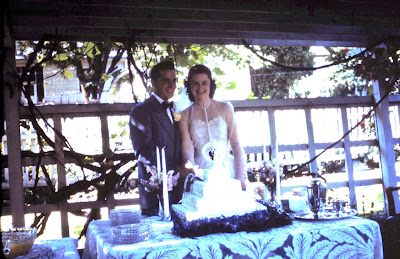Ina Dobson, 1935:
Living quarters are scarce in Idaho Falls, and Earle and Bernice had a hard time finding a place to live this year. They moved into a place and soon a family of seven moved in overhead and nearly drove them wild with noise. Then they moved into a lovely old house with beautiful flowers around it, but it also had been turned into an apartment house, and again a family of seven or eight moved in above, which they couldn’t tolerate. At last, a fellow teacher took them in by making the upper floor of his home over into living quarters for them.
We have several family members who want to live simply at this time – no costly house payment, expensive apartment rental, or amassing of things. These individuals have struggled to find comfortable living situations, which brought to my mind the boarding (or rooming) houses of old. What happened to those?
 |
| The house in Orofino, 1959 |
My parents’ home in Orofino, built about 1913, was large by the standards of that day and configured so that it might be a boarding house. The owner constructed it so that his wife could take in boarders should he predecease her. For instance, my room had two doors so that it could be partitioned into two rooms. However, the wife died unexpectedly soon after the house was finished, and he sold it. It was never a boarding house.
Many large old homes of the 19th century were eventually converted into boarding or apartment houses. Taking in boarders was a means for a woman – usually the owner/manager was a woman – to make a living or augment her income. Opportunities for women outside the home were limited, remember.
 |
| A furnished living room of the '30s |
I’m reminded of my dad’s sister, Myrtle, a single woman, who worked as a photographer’s assistant in Portland. I’m sure she didn't make much money. From the ’20s through the ‘40s, she lived in boarding houses. Such accommodations made it possible for many people – men and women – to live and work in the city.
For that matter, my dad’s brother Earle and his wife lived in other people’s houses for many years. He was a teacher in Idaho Falls, but during summer vacation, he returned to the farm to help with the work. As I understand it, they just lived as roomers during the school term, vacated those rooms in the summer, and in the fall, they searched out new accommodations.
The boarding house provided a supposedly secure place and in some of them, meals were served. Often the roomer just had a room, and one bathroom was used by all.
Many people lived like that, and it met a need. I mentioned this to a friend (older than I), who said that after WWII, her husband lived as a boarder and liked the convenience of it. It was affordable, his meals were provided, no clean-up necessary, and he saved money for the future.
But there were problems, and communities began to discourage boarding facilities. The thing is, they were difficult to regulate. Often the house was rundown and a fire trap. Sometimes a brothel was billed as a rooming house for women. Some boarders (and some owners) were disreputable. (We’ve all seen those suspense movies, right?) Boarding houses in residential areas could be in conflict with zoning laws. According to Wikipedia (here), by 1950, the boarding house was mostly gone.
I think there's a need for such facilities, and someone told me they're coming back, but I don't know if that's true. KW

























